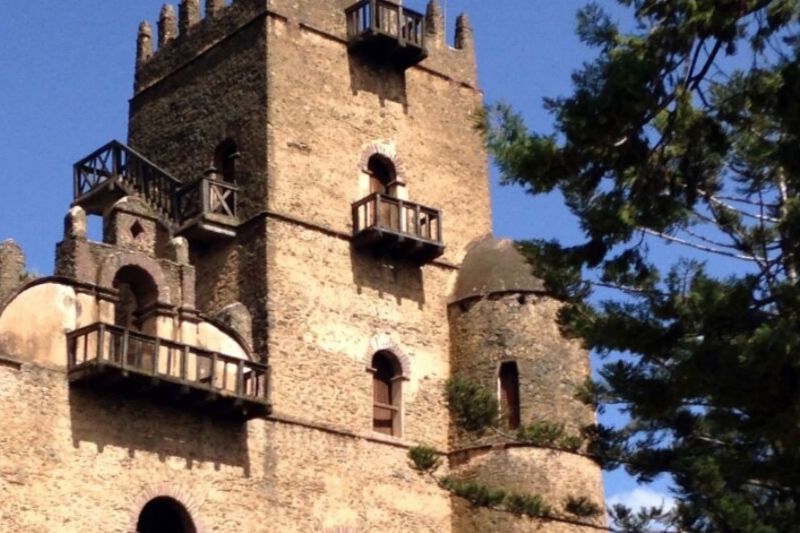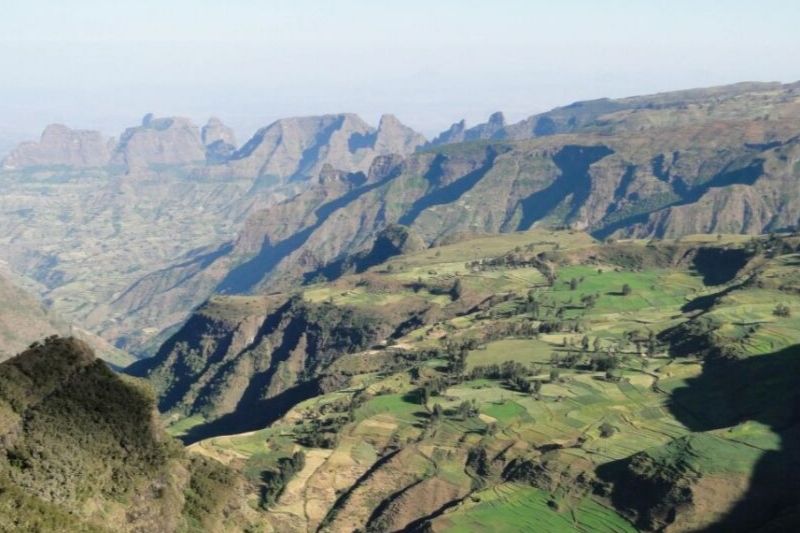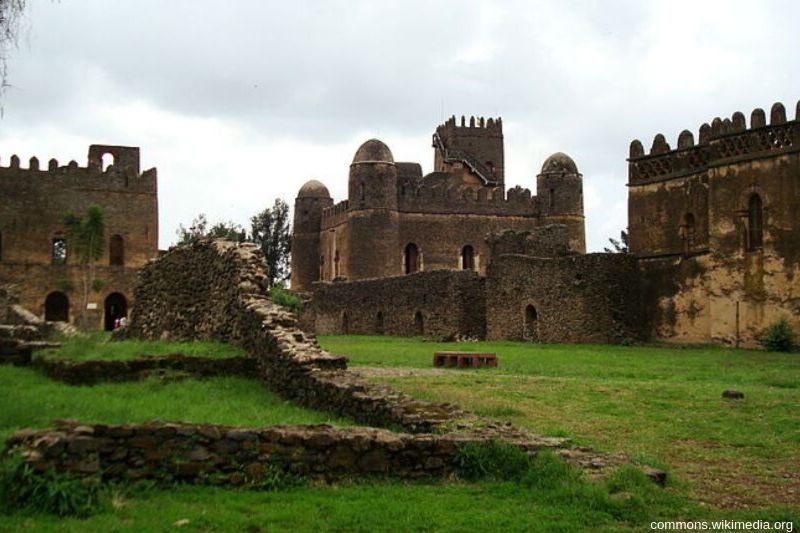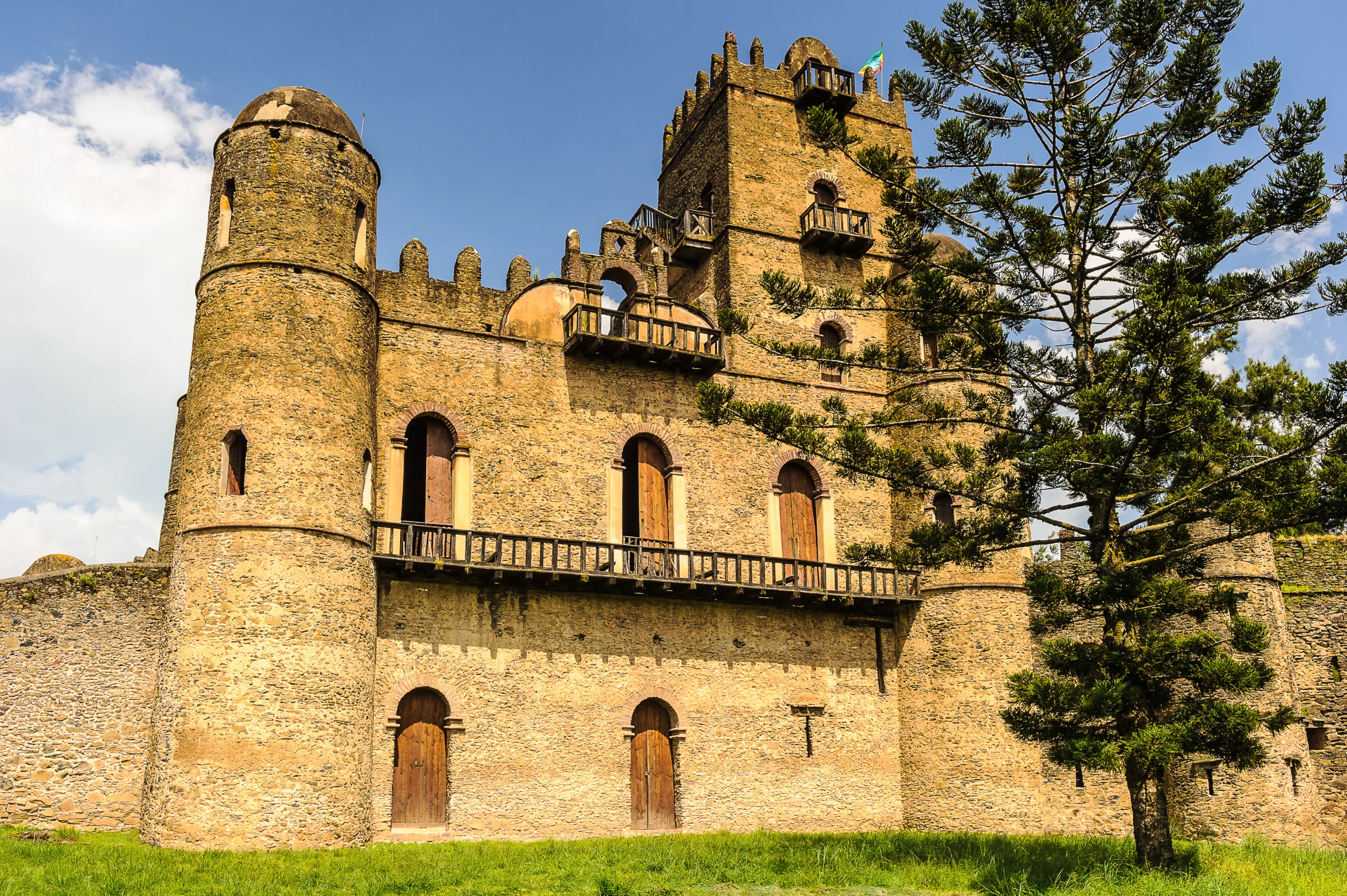The ancient historical city of Gondar is home to many of Ethiopia’s unique sightings and wildlife. Popularly referred to as the Camelot of Africa, Gondar is home to the emperors and princesses who ruled Ethiopia from the 12th century to the last decade of the 20th century. Little wonder it is such an ideal destination for tourists. The city is located in the northern Amhara region and features a staggering array of churches, castles, and palaces that date back to the 17th and 18th centuries, several of which stand tall to this day.

Sights and Attractions
Gondar was named a world heritage site by UNESCO because of its richness in history, and the remains of imperial buildings constitute the city’s grandeur and uniqueness. In addition to being the country’s ancient seat of power, Gondar also boasts the highest mountain in Ethiopia, Ras Dashen, as well as a host of other exciting sights and activities, such as:

Simien Mountains
Situated in Gondar zone of the Amhara region in northern Ethiopia, the Simien Mountains is an exotic setting with unique wildlife and breath-taking views on a landscape shaped by nature and traditional agriculture. Its natural beauty has for years, been a source of pride among Ethiopians and filled visitors with awe. From the gentle highland ridges at altitudes 360 meters above sea level covered with grass to isolated rocky lands. All these can be found on the high plateau that ends abruptly at an almost 2000-meter deep escarpment.
Visitors wishing to explore the breathtaking Simien Mountains can visit the Simien Mountains National Park, from where they can begin their ascent. The wildlife here are as varied as can and includes a myriad of rare species including the Ethiopian wolf, Gelada baboon, the Mountain Nyala, and the Walia ibex. The Gelada baboon is the rarest in the world, while the Simien fox is the most endangered carnivore. Birds like the white-cheeked turaco, the blue-winged goose, and the Rouget’s rail can only be seen roaming the skies of Ethiopia. These animals that have survived up to the present despite the severe restrictions of their habitat over the last centuries.
Debre Birhan Selassie Church
At first glance, Debre Birhan Selassie Church seems more like a fortress than a church. It was built this way to ward off the Sudanese attackers in the 1880s. The church features amazing ceilings with intricate paintings of Angels, and its countless rows of winged cherubs representing the omnipresence of God draws most eyes. The highlight of the church is the devilish Bosch-like depiction of hell and a large stone wall with 12 rounded towers that surround the compound represent the 12 apostles. The entrance gate which is the larger 13th tower symbolizes Christ and is shaped like the Lion of Judah.
Empress Mentewab’s Kuskuam Complex
A royal compound known as Kuskuam and was built in 1730 for Empress Mentewab after the death of her husband(Emperor Bakaffa). The complex is made up of series of buildings including a long, castellated palace used for state receptions and to house the royal garrison. Its main attraction can be found under one of the egg-shaped towers, where a small glass-fronted coffin rests with the remains of the Empress, her son Emperor Iyasu II and grandson Iyo’as, the last Emperor of Gondar.
Gongora
Located on the northern shore of Lake Tana about 70 km from Gondar, Gongora is a small beautiful town with some interesting historical relics from its brief time as the capital of Ethiopia. Gongora is perfect for birdwatching and canoeing with the local and friendly fishermen.

The Royal Enclosure
This amazing world heritage site known as the royal enclave is an entire 70,000 sqm. compound containing numerous castles and palaces. These castles include:
Fasiladas Palace
By far the oldest and most impressive, Fasiladas Palace is located just inside the entrance gate. It stands 32 meter tall and has a crenelated parapet, along with four domed towers. The palace is made of roughly hewn stones and is said to be the work of an Indian architect, although the building oozes an unusual synthesis of Indian, Portuguese, Moorish, and Aksumite influences. Its main floor was used as dining halls and a formal reception area. The walls have relics on them, including several stars of David which are believed to be linked to the Solomonic dynasty. Some parts of the building, like the room in the northern corner, boast their original beam ceiling and some frescoes.
Fasiladas Prayer Room
This room is located on the 1st floor has windows in four directions, each overlooking Gondar’s important churches. Above the 2nd floor bedroom was the watchtower from where it is possible to see all the way to Lake Tana. Most religious ceremonies were held on the rooftop, and it was from there he addressed his people.
The Palace of Iyasu I
To the royal enclosure’s northeast lies the saddle-shaped palace of Iyasu I ( who is considered the greatest ruler of the Gonderine period), with its unique vaulted ceiling. Up until the earthquake in the 1704 and the British bombings in 1940, the palace used to be sumptuously decorated with gold leaf, Ivory, and beautiful paintings that adorned the walls. Most visiting travelers described the palace as more beautiful than King Solomon’s house. The skeletal shell left standing reeks of history and is still a sight to behold.
Getting to Gondar from Addis Ababa
By Plane – Ethiopian Airlines has daily flights from Addis Ababa and Lalibela to Gondar airport and you can board a taxi from the airport.
By Bus – Companies operate fairly comfortable luxury coaches and provide bus services from Addis Ababa to Gondar. Keep in mind that this trip usually takes the whole day.
Gondar is a city that does not blend in but stands out as a historical monument to the ancient and glorious reign of Ethiopia’s royal empire. Tourists flock to this city by the thousands just to catch a glimpse of this ideal Ethiopian destination and its many wondrous offerings. Is Gondar on your bucket list? Give us a call today or visit our website for more information on how we can help you make it a reality.

